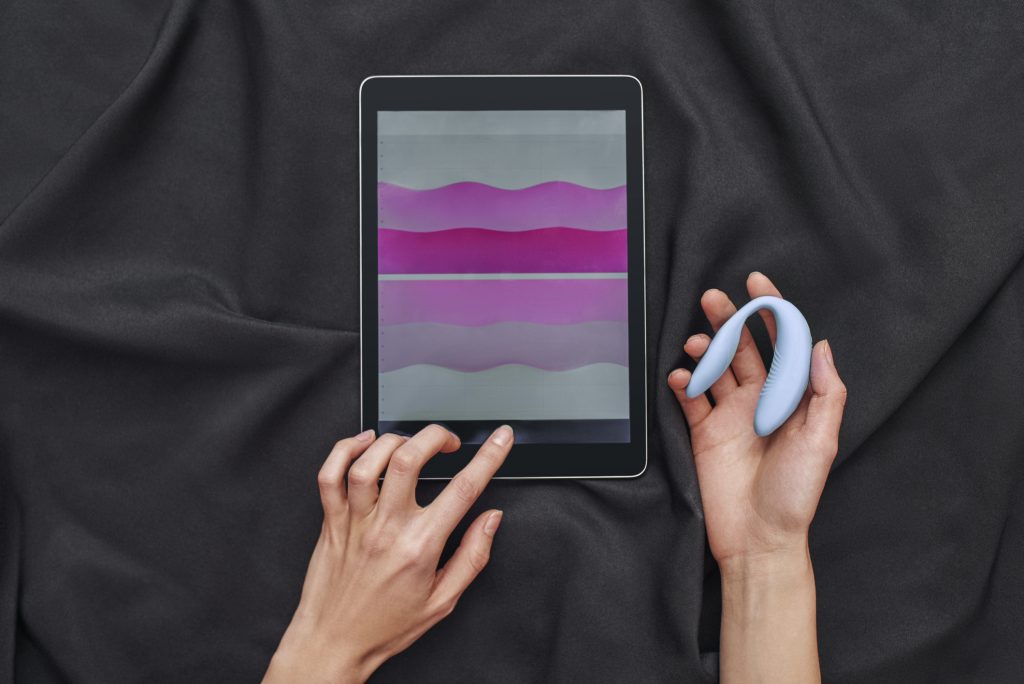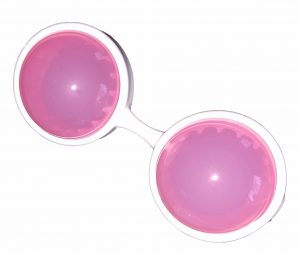Toys and tools to train your pelvic-floor muscles

It can be hard to remember to do Kegel exercises. Maybe you’re not even sure if you’re doing them correctly. Perhaps your doctor or physiotherapist has suggested other muscle training for your pelvic floor. In these situations, a pelvic-floor training device may be helpful.
When used correctly, these devices can assist you in training your pelvic-floor muscles and provide you with useful biofeedback, so that you are more aware of what is happening in your pelvic floor. With regular use, many women notice that they are better able to contract and relax pelvic muscles. This can improve urinary incontinence issues and may result in greater sexual pleasure during intercourse.
The challenge in deciding which device to purchase, if at all, is that it can be difficult to know what your pelvic floor is actually doing, e.g. contraction, relaxation, degree of exertion/movement. Often, women assume that the problem with their pelvic-floor muscles is related to a lack of muscle strength. Sometimes, it is just the opposite. Over-contraction of the muscles can also cause problems.
Assessment
A pelvic-floor physiotherapist (also called a physical therapist) can assess what is happening with your pelvic muscles and provide specific advice and assistance. During an assessment, the physiotherapist looks at the behaviour of the pelvic floor and its relationship to other parts of the muscular core, such as the diaphragm and abdominal and back muscles. This is important because the pelvic floor responds to and affects the low back, pelvic joints and hips.
The physiotherapist will also check the following:
- Size of the vaginal opening,
- Contraction and relaxation of the muscles,
- Muscle strength (how strongly the muscles contract),
- Muscle endurance (how long the muscles can contract and hold), and
- The effectiveness and speed of quick contractions of the muscles.
Types of training devices
There are many products available to help train pelvic-floor muscles. Devices can be purchased online and in many drugstores or adult stores. Below are some of the types of devices that our physiotherapists use with patients.
Devices used for trigger-point release
Tight pelvic-floor muscles do not have enough give to properly support the bladder. This can lead to incontinence. Devices that provide trigger-point release can be helpful in relaxing and lengthening the pelvic-floor muscles. Essentially, these devices are thin, G-spot vibrators.
Vaginal dilators
If a patient’s vagina is too tight or sensitive for trigger point release, physiotherapists use vaginal dilators. Vaginal dilators are tube-shaped devices that are inserted into the vagina. They come in sets to allow progression, but can also be purchased in individual sizes. These devices aren’t meant for stretching the vagina. Rather, they provide biofeedback, allowing awareness of relaxing muscles away from the dilator. This process is best done under the guidance of a physiotherapist.
Kegel balls
Kegel balls, also called eggs or Ben Wa balls, are small weighted balls that can be inserted into the vagina to exercise pelvic-floor muscles. To keep the ball in the vagina, the pelvic-floor muscles must be contracted. Some liken the use of Kegel balls to resistance training for the pelvic-floor muscles. Kegel balls come in different sizes, styles and weights and can be made of many different materials, such as stainless steel, silicone, plastic or stone. You can find them sold as a single ball or in multiples.
Kegel balls should only be used for short periods of time until pelvic-floor strength is built up. Like in any weight training, users should start with lighter weights.

Smart Kegel devices
Smart Kegel devices are interactive. When inserted, they connect wirelessly to an app on your smart phone. The app sends notifications when it is time to do Kegels, leads you through a series of Kegel exercises, and provides feedback on your progress. Some smart Kegel devices provide video-game-like visuals to encourage muscle contraction and relaxation.
These devices are only useful if a woman has an adequate vaginal opening and can easily insert the device. Also, women who struggle to relax their pelvic-floor muscles may find these devices difficult to use. Most women are able to figure out squeezing around a device, but the relaxation of muscles often requires guidance from a physiotherapist.
Before you buy
Before you add that fancy device to your cart, we recommend the following:
- Get an assessment – An assessment with a pelvic-floor physiotherapist can help you understand what’s going on in your pelvic floor. The physiotherapist can make specific recommendations for devices that would best serve you and teach you how to use the device properly.
- Beware if you’re pregnant – There is limited data on the use of training devices in women who are pregnant. We recommend that pregnant women check with their physicians before using a device.
- Look for products made of safe materials – Devices made of non-porous, hypoallergenic materials, such as medical-grade silicone or plastic are best. Avoid Kegel balls made of porous materials, like jade, as they can harbor bacteria.
Book a physio appointment
Contact us to book a pelvic-floor physiotherapy appointment. No referral is needed, and physiotherapy is covered by many health insurance plans.
vesia [Alberta Bladder Centre]
403-943-8900
Resources
Continence Foundation of Australia
Healing Pelvic and Abdominal Pain
For the purposes of this article, we have focused on the cis-female population.
However, our physiotherapists treat patients of all genders.


